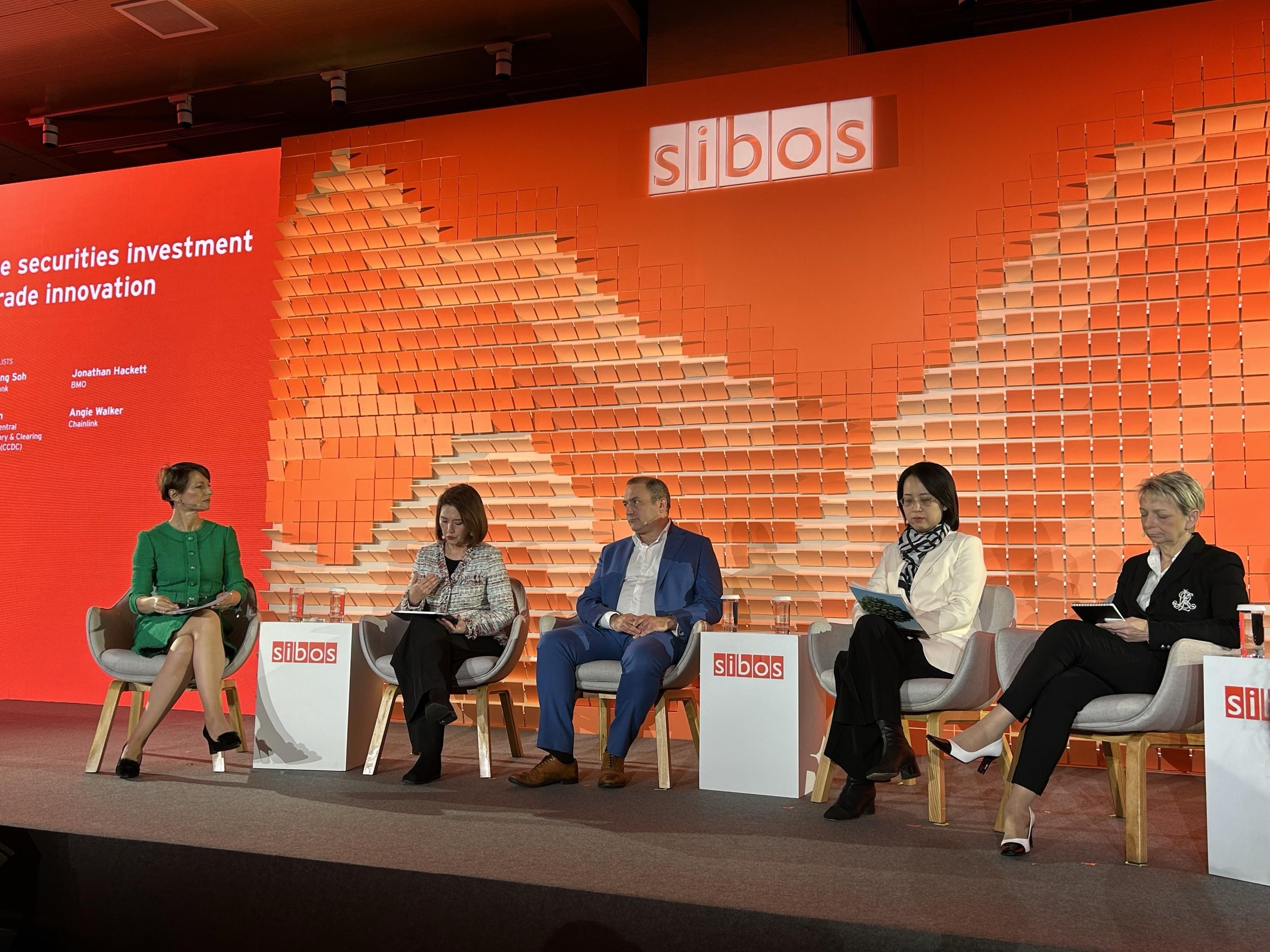Financial and technological innovations can help address the challenges of transitioning to a net-zero world while also creating new opportunities for investors and corporate actors focused on achieving their sustainability goals.
Those were some of the key takeaways of the “Sustainable Securities Investment and Post-trade Innovation” panel discussion that Jonathan Hackett, former Managing Director and Head of Sustainable Finance, BMO Capital Markets, participated in at Sibos 2024 Beijing, an annual global financial services event organized by Swift.
Joining him on the panel were:
`
Jie Lin, Senior Director, China Central Depository & Clearing Co
Diana Parusheva, Managing Director, ASIFMA (Moderator)
Ee Fong Soh, Global Head of the Securities and Fiduciary Services, Client Management and Implementation, Global Transaction Services, DBS Bank
Angie Walker, Global Head of Banking and Capital Markets, Chainlink
Dual taxonomies
Incentivizing the flow of capital into projects and areas where more investment is needed to create a sustainable future, and helping investors and companies make informed decisions about sustainable investments are important objectives for BMO.
However, around the world, the use of taxonomies, which create standards to help market participants make decisions, has emerged for two seemingly competing purposes. On the one hand, the tools and standards help support investors that may have exclusionary or restrictive mandates, e.g., helping to eliminate or reduce exposure to things like oil and gas. On the other, some jurisdictions use taxonomies to identify where capital is needed to drive the energy transition, which might include "brown to green" conversions or energy efficiency projects on existing brown infrastructure.
The benefit of using taxonomies is that they provide a common language and reference for sustainable finance. However, as ASIFMA’s Diana Parusheva noted, the dual taxonomies can pose challenges particularly for multinational market participants figuring out if they should follow regulations and definitions in the home jurisdiction or where the targets of their investments are located.
There is an opportunity to balance the need to align with any given jurisdiction’s taxonomy for their investors while ensuring that capital flows to the areas where it will have the greatest impact on advancing the energy transition. Finding ways to allow investments to flow from one region to another without only using the intersection of their taxonomies is critical to increasing funding for the transition.
Regarding sustainable investments, Jie Lin from China Central Depository & Clearing Co. noted that improving data consistency and standardization would help investors navigate different jurisdictions.
Development of carbon markets
Another area in need of development but also ripe with opportunities to innovate is carbon markets. Unlike commodities such as pork bellies or crude oil, a ton of carbon is not necessarily purchased the same way by investors.
For some market participants, a ton of carbon may be purchased or traded like a commodity. For others, the investment focuses on the price needed to support a nascent technology, such as direct air capture, or a project to remove carbon at scale.
This creates what can be described as a two-speed market. However, both areas of development need to continue to attract fresh capital to drive toward net zero targets and support carbon removal projects.
Deploying new technologies
What’s more, building confidence among investors in sustainability-linked instruments could help with broader market development. Angie Walker from Chainlink described an example of how her company uses distributed ledger technology and geospatial imaging to verify the work supporting a sustainability-linked bond issuance and to validate the reduction of carbon emissions by the issuer over time.
DBS Bank’s Ee Fong Soh explained how her company was exploring generative artificial intelligence (AI), a type of AI that creates new content by learning from existing data patterns, to support securities services tasks associated with fraud or anomaly detection and workflow analysis.
Strong and consistent policy signals
With COP29 in November, another area that holds both challenges and opportunities is policy. The potential opportunity is for policy decision-makers to set a tone of commitment to common net-zero goals.
Some questions have lingered among market participants about levels of commitment from global economies to meet targets within a 2050 timeframe. These doubts can lead to delays or reductions in investments in decarbonization efforts. In addition, lack of strong and consistent policy signals today can by implication also make the cost of carbon removals in the future more expensive.
With the right policy signals, innovation in finance and technology can help advance the energy transition.
